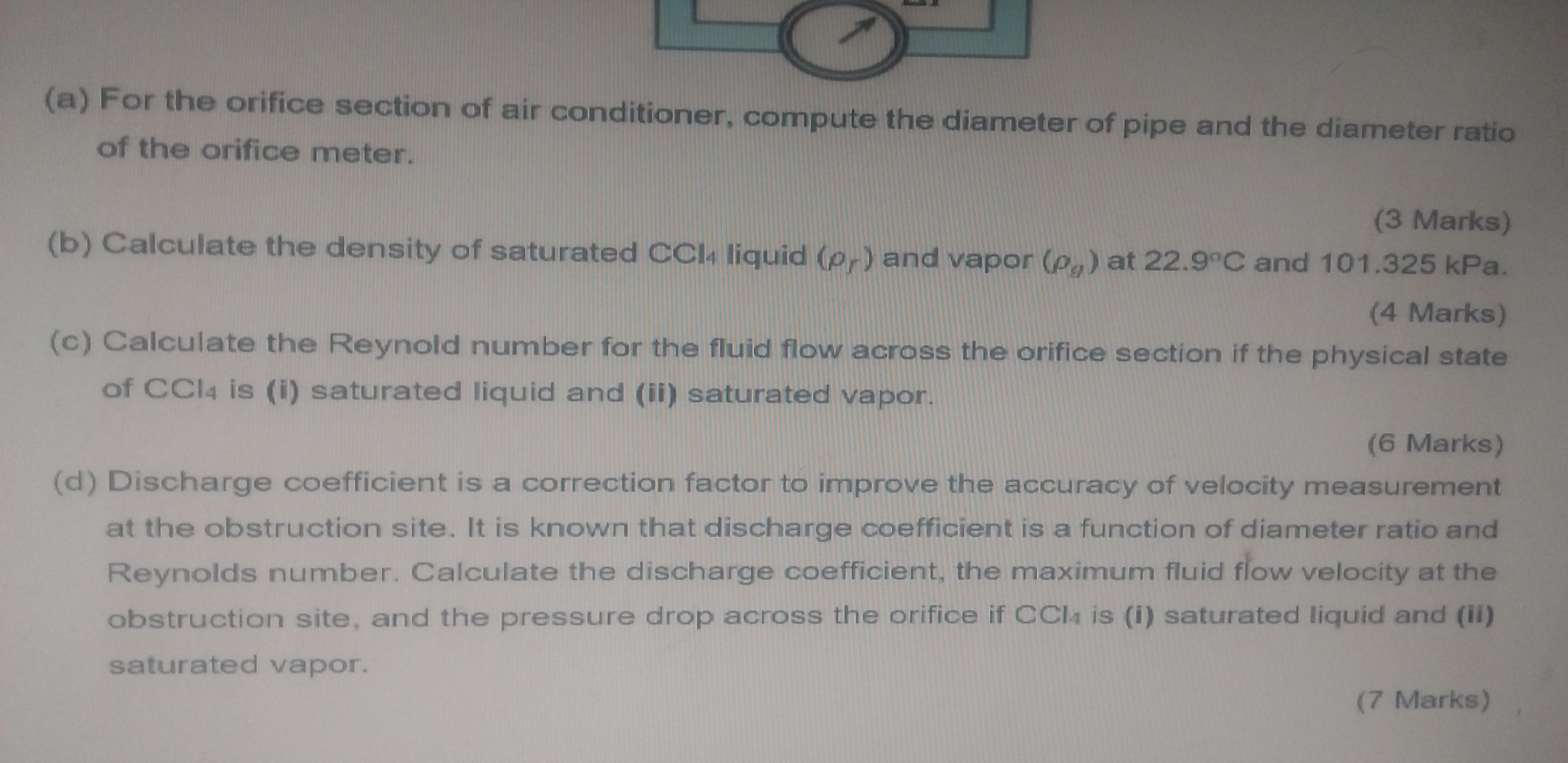Answered step by step
Verified Expert Solution
Question
1 Approved Answer
As a maintenance engineer hired under Incredible Air Conditioning Sdn. Bhd., you are asked to inspect the pressure drop behavior of carbon tetrachloride (CCL)


As a maintenance engineer hired under Incredible Air Conditioning Sdn. Bhd., you are asked to inspect the pressure drop behavior of carbon tetrachloride (CCL) across an orifice inside the air conditioner system. Unfortunately, your company has limited number of pressure measurement devices, which hinders the direct measurement of the pressure drop. By applying the knowledge of fluid flow measurement, one can compute the pressure drop across the orifice. Inside the air conditioner, the CCl4 serves as a coolant that absorbs heat at 25C and 101.325 kPa, so CCl4 will continuously undergo condensation (saturated vapor saturated liquid) and vaporization (saturated liquid saturated vapor) at the same temperature in the cyclic manner. Throughout the air conditioner, the CC constantly flows at 15 kg/s regardless any physical phases and flow sections. For orifice section, the orifice with a throttle diameter (d) of 2.61 cm is installed along a pipe with a uniform cross-sectional area of 14.862 cm. At 22.9C and 101.325 kPa, viscosity of saturated CC liquid and vapor is 0.901 mPa-s and 0.10006 mPa's, respectively. CCM has a gas constant of 0.05405 kJ/kg K and a liquid specific gravity of 1.594 (22.9C and 101.325 kPa). fa TP D (2) (a) For the orifice section of air conditioner, compute the diameter of pipe and the diameter ratio of the orifice meter. (3 Marks) (b) Calculate the density of saturated CCl4 liquid (pr) and vapor (p) at 22.9C and 101.325 kPa. (4 Marks) (c) Calculate the Reynold number for the fluid flow across the orifice section if the physical state of CCl4 is (i) saturated liquid and (ii) saturated vapor. (6 Marks) (d) Discharge coefficient is a correction factor to improve the accuracy of velocity measurement at the obstruction site. It is known that discharge coefficient is a function of diameter ratio and Reynolds number. Calculate the discharge coefficient, the maximum fluid flow velocity at the obstruction site, and the pressure drop across the orifice if CCl4 is (i) saturated liquid and (ii) saturated vapor. (7 Marks)
Step by Step Solution
★★★★★
3.39 Rating (158 Votes )
There are 3 Steps involved in it
Step: 1
the diameter ratio b We compute the diameter of pipe c x D Pflect4 ...
Get Instant Access to Expert-Tailored Solutions
See step-by-step solutions with expert insights and AI powered tools for academic success
Step: 2

Step: 3

Ace Your Homework with AI
Get the answers you need in no time with our AI-driven, step-by-step assistance
Get Started


